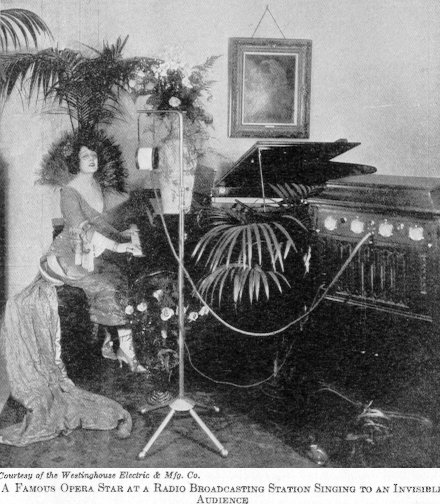Fessenden and Radio Sound
Today, we add sound to radio. The University of Houston's College of Engineering presents this series about the machines that make our civilization run, and the people whose ingenuity created them.
The idea that, at some point, we had to add sound to radio may sound strange indeed. But we did. In 1893, Nikola Tesla sent a wireless signal across a room. In 1901, Guglielmo Marconi sent one across the Atlantic. But neither signal transmitted sound. Indeed, we were soon calling this new medium wireless telegraphy, because we could send only telegraphic dots and dashes.
Writer William Zuill tells how the little-known inventor Reginald Fessenden solved the problem of sending sound. Fessenden was a bright kid, born in Quebec in 1866. He studied science, then worked as a teacher in Bermuda. His father wanted him to be an Anglican priest. But he was determined to work with the famous Edison.
It took him two years to get a low-level job at Edison's Machine Works in 1885. While he worked, he studied electricity and rose in the company. Then, one day, Edison told him that his chemists had failed him. Edison wanted Fessenden to learn chemistry and to invent a flexible insulating material. So Fessenden became a chemist.
He'd become the chief chemist just as depression forced Edison to make cutbacks. Over the next ten years, Fessenden taught college, he worked for Westinghouse, and he invented. Then, in 1900, before Marconi, the U.S. Weather Bureau went to him.
They asked if one could use radio waves to distribute meteorological data. Fessenden managed to send data over fifty miles. But he didn't stop there. He realized you should be able to send more elaborate signals than Morse Code if you could vary, or modulate, the signal's amplitude.
The frequency of 60-hertz AC is too near the low threshold of human hearing. He needed a high-frequency carrier signal. He hired a GE engineer to create a 76,000-hertz generator. Then, on Christmas Eve, 1906, he aired the first public audio broadcast from a tower in Massachusetts. He played Handel's Largo and O Holy Night on his violin. He sang one last verse and finished with a Bible reading.
He went on to patent means for modulating a signal's frequency instead of its amplitude. Think for a moment what that meant: Fessenden had not only invented AM, he'd also set the basis for FM.
And all this by the age of forty. The rest of his life mired into the patent disputes that hung like a loathsome cloud over early radio. A year later, Lee de Forest had appropriated his key invention for transmitting AM. Edwin Armstrong modified his theory to create practical FM. The resulting patent miasma was still there when Fessenden died at sixty-six.
Too bad! Fessenden had truly expressed the power of creative renewal that Christmas Eve. Radio grew and evolved until another Christmas Eve, sixty-two years later. This time, NASA's Frank Borman read another message of hope as he came out from behind the moon. And those two broadcasts remind me that our inventions, used well, really do hold means for raising up the human lot.
I'm John Lienhard, at the University of Houston, where we're interested in the way inventive minds work.
(Theme music)
Zuill, W. S., The forgotten Father of Radio. Invention and Technology, Vol. 17, No. 1., Summer 2001. pp. 40-47.
See also Lewis, T., Empire of the Air: The Men Who Made Radio. New York: Edward Burlingame Books, 1991.

Image of radio from the 1923 Wonder Book of Knowledge,
seventeen years after Fessenden's first broadcast

From The Boy Scientist, 1925